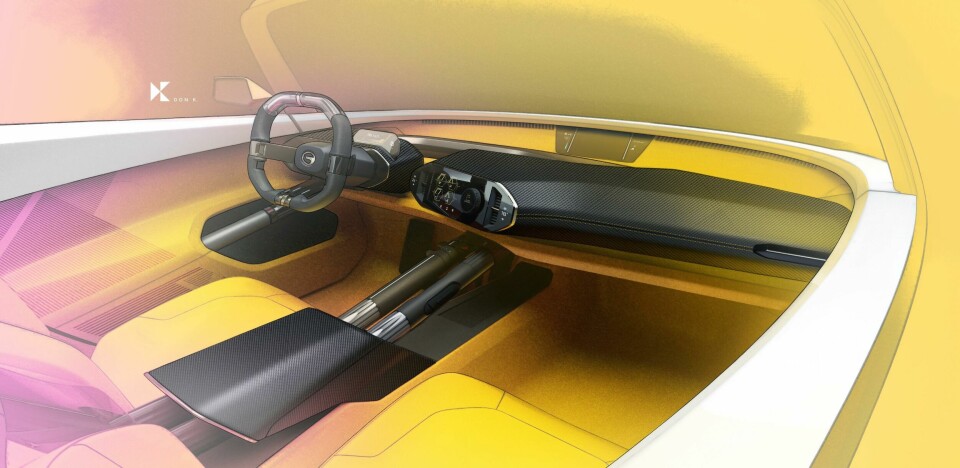
Interior Motives Summer 2021: GAC Enpulse
With a refulgent yellow interior, a structurally impressive IP and pop culture stylings, GAC’s Los Angeles team has designed a sportscar for the digital age with the Enpulse
“We’ve never seen this car,” says Pontus Fontaeus executive design director GAC Advanced Design Los Angeles. “For us, everything exists in the virtual world.” The admission is a sharp illustration of the digitally-led methodology of Fontaeus’ Californian studio and a concession to the frustrations of Covid times. The designer refers to the Enpulse concept – a sportscar first unveiled at the Beijing Auto show in December 2020. Designed in LA, built in China, the Enpulse garnered a great deal of attention on launch. Now, like most things in the world, it sits in a kind of limbo, awaiting a potential shift to production at an as yet unspecified date. Assuredly a cliche to describe a design as being defined by contrast, in the case of the Enpulse it holds true. Within the vibrant interior there are all manner of forms and ideas playing off one another: structural expressionism, postmodern irony, a Generation X fascination with Star Wars, Pop Art, you name it.
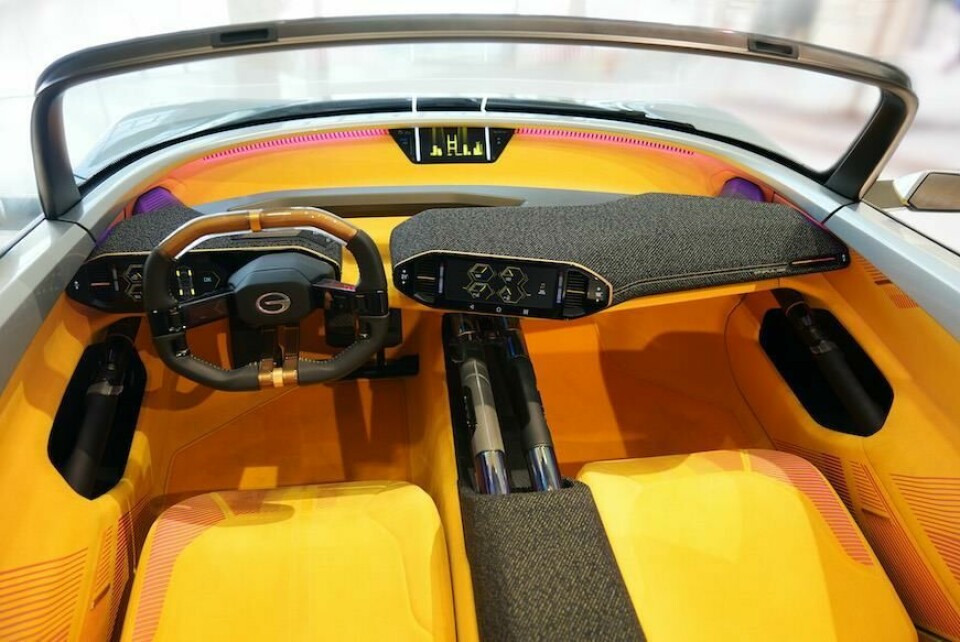
Onlookers at the Beijing show viewed a silvery sculpted exterior which owed much to its trio of influences: Aston Martin, Miata and Ferrari 458. “We did an enormous amount of benchmarking to determine what exactly it should be,” says Fontaeus. The scissor doors rise to reveal a refulgent yellow interior punctuated by a brace of bright pink seatbelts much like the classic Paul Smith suit that conceals a daring interior lining. It was supposed to be a more subdued green, Pontaeus says, to maintain an aesthetic trajectory set by forerunners: Entranze and ENO.146. His frighteningly young team convinced him that yellow was the way to go. “I am very comfortable being uncomfortable. I’d rather try something I’ve never done before, so we went for yellow.”
The skill and method of execution – digital files transferred from LA wrought first in clay then aluminum and steel in China – echoes the relationship between conceptual artist and maker. The real intrigue, however, lies in the brief, which aimed to sell a sports car to a market with little experience of the typology and no real cultural frame of reference. The alacrity of the Chinese market, which marries attention spans curtailed by an obsessive online culture with an unceasing lust for the new, only served to further the challenge.
“A sports car doesn’t have any heritage in China. And when your starting point is an EV, you cannot approach it in the same way,” says Fontaeus. Nevertheless, it had to convey a sense of freedom associated with sports cars. A convertible seemed an obvious start point. “This is a car for modern or trendy people, so fashion was a very important element for us but also to show off. It is impossible to sit in an open car and not be seen.”
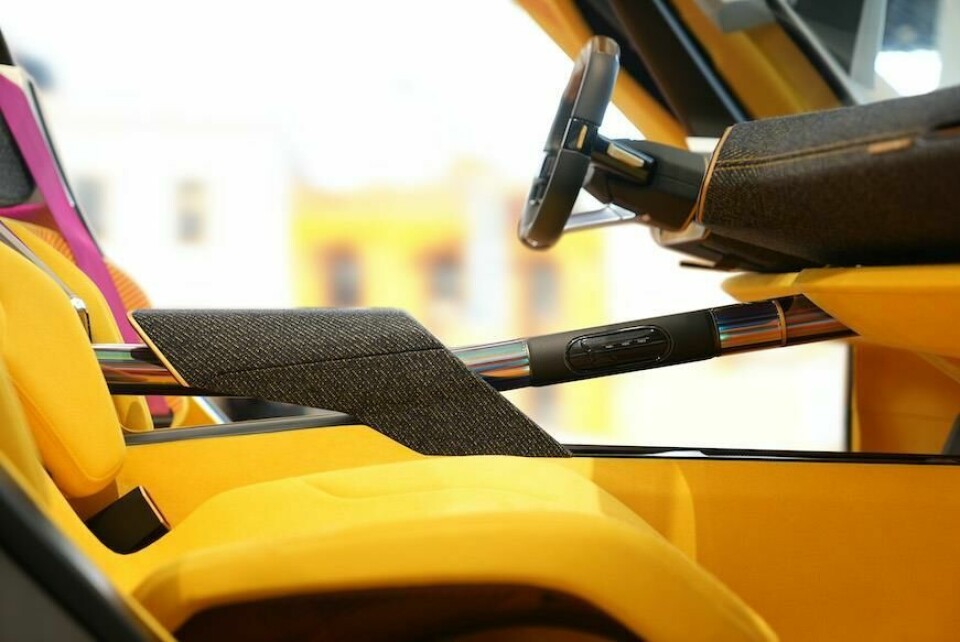
With little heritage to call upon, tried and tested signifiers of speed and levity: machine-punched holes in steering wheel spokes and pedals, for example, were nonsensical. “We went for a layered construction that showed the core and the materials to show sportiness and lightness.” This layered approach is most obviously apparent in the IP, which is split into two areas – driver and passenger – that emerged from a single looping form that defines the perimeter of the interior. “The IP feels like it is floating, and you get this exposed structure,” says Don Kabongo, interior designer.
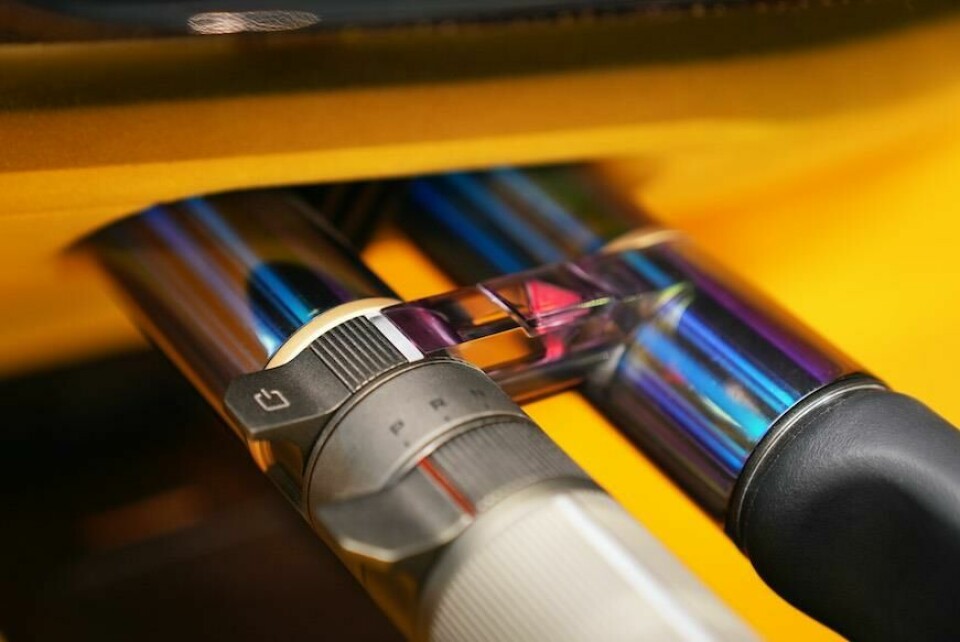
The driver is placed centre stage, hugged in place by a dynamic race car inspired chair created from a tripartite form: headrest, horseshoe-shaped upper back support, and seat. The IP is clothed in Kvadrat fabric, another acknowledgement of the influence of the fashion world. The material trades the hardness of a carbon fibre or plastic for an almost feminine softness. “We want to have the preciseness and the techy feeling, but we do not want to be too cold,” says Fontaeus. The CMT cleverly joins exterior and interior via a series of parallel lines that appear on the lower faring and reappear again on the seat and floor.
The steering wheel is a rectircular three-spoke steering partly encased in transparent acrylic that reveals the underlying structure and echoes the racing stripe on the car’s flank. “There is something intriguing about it, like an X-ray,” says Fontaeus. It is also a nod to the American sports cars of the 60s. However, in this reference to the golden age of combustion lies the primary challenge for any designer attempting a sports car – namely provoking an emotional response from the driver. Whichever way you cut it, there is a colourlessness that comes with EV silence, which matters little in the everyday A-to-B shuttle but defines a sportscar.
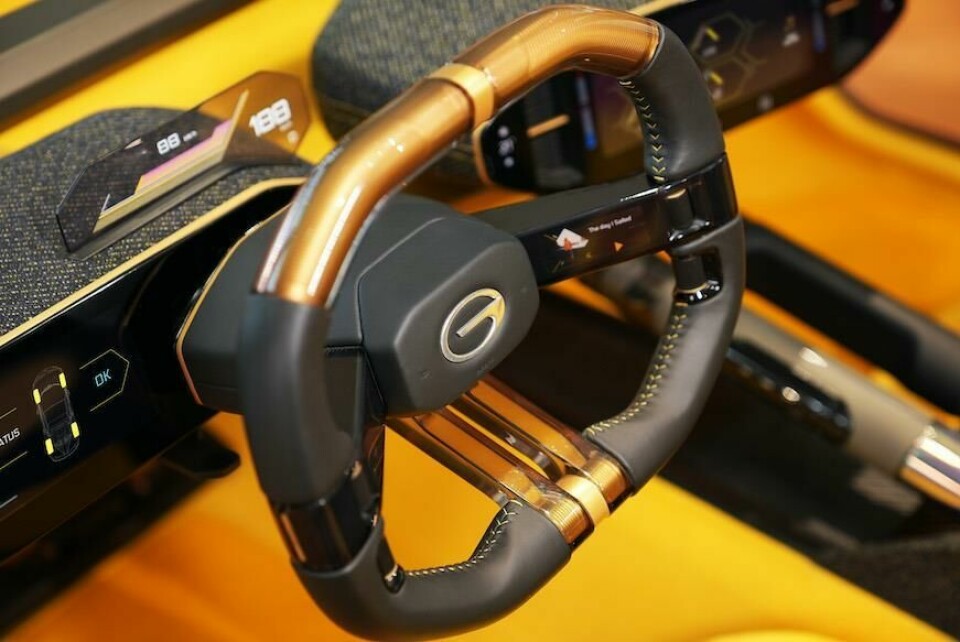
“There is a ritual when you fire up a combustion engine, particularly a classic. It is like stuffing a pipe.” How then, to create a ritual when the soul of the car is absent. Kabongo explains: “We had this idea of an electric current running through the car, which, when you turn it on, it flows through the rest of the car essentially igniting everything.” With visual theatrics replacing aural ones, the internal structure needed to act as he conduit to this ‘pulse.’ This comes courtesy of a tubular central console or ‘lightsaber’ as Kabongo refers to it on which sits the start button and a handful of controls. Furthering the Star Wars theme, the design team looked to imagery from the original 70s movie, namely the Millennium Falcon’s famed jump to lightspeed which in the film stretches the star-studded blackness into luminescent vectors. “The pulse is like a heartbeat, and in resting mode it just pulsates like it’s alive,” says Fontaeus.
The design team paid a welcome amount of attention to the UX/UI, Fontaeus is nonplussed by the disconnect between UX and CMT commonly seen when teams are too keenly demarcated. “The UX/UI is the gemstone, the interior is the ring-holder, and the exterior is the Tiffany box,” he says. Though simplicity is the watchword, too many whistles and bells would deaden the driving experience, the detailing in the instrumentation demonstrates the design literacy of the studio.
A fan of chronographs, Fontaeus designed a Casteban to mark the anniversary of Ferrari, the Enpulse features a variety of display options that recalls the functional beauty of the 60s. “It’s a homage – a romantic look.” Elsewhere in the cabin you will find written in-jokey slogans – a hallmark of a design team confident enough not to take itself too seriously.
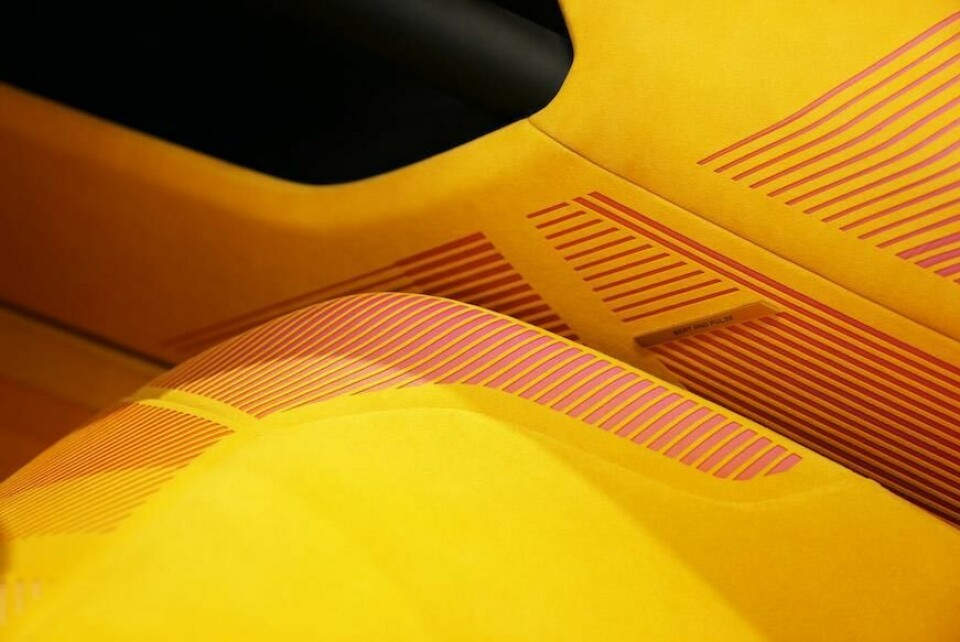
Ultimately, sports cars inspire loyalty like few other typologies: from the newbie dad reminiscing about the coupe he traded for an MPV to the tireless weekend enthusiast. Of course, car clubs are two-a-penny in Europe and the US but less common in China. “We thought a lot about Enpulse drivers being a tribe and how we could connect them. Perhaps we could create an Enpulse subculture, which is harder with an MPV or sedan.” In practice, this means a gaming mode that allows you to compete against virtual Enpulsers, which can be recorded by onboards and exterior cameras.
Of course, kickstarting a subculture is hardly a prescriptive endeavour – scenes tend to evolve from a set of societal conditions. That said, if the Enpulse is to succeed it needs to embed itself in the minds of its target audience. And this 21st century interpretation of a car club seems as good a jumping off point as any.
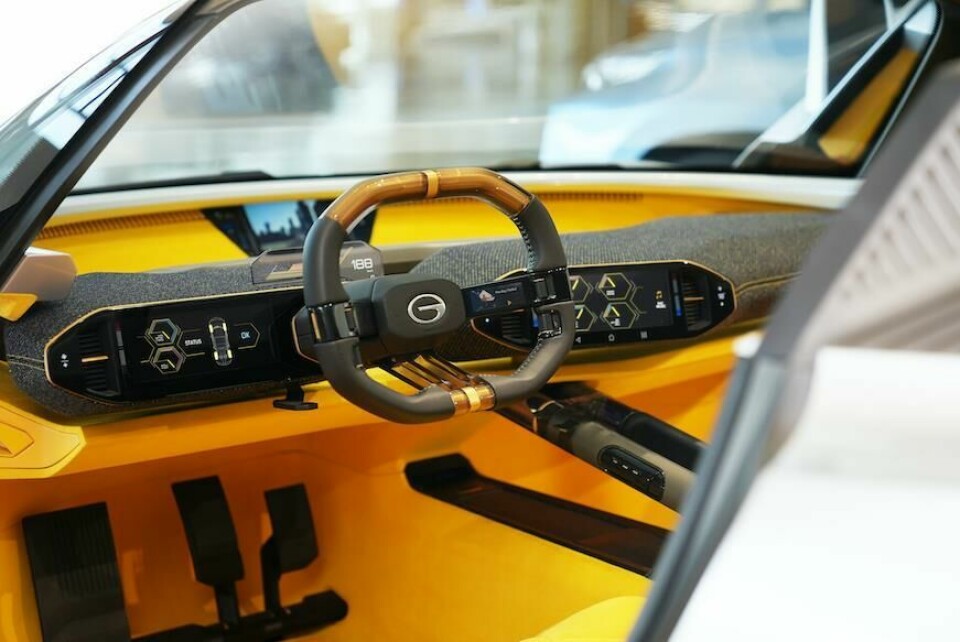
Indeed, the GAC Enpulse feels very much like a sports car for the digital world: visually striking, dramatic, connected, and with enough detail to hold your attention. So, will it be made? “It’s not in my hands,” says Fontaeus. “We’ve done our job and given GAC a good foundation to make a decision, and then it’s really up to them.” Whether GAC believes there is an appetite for a Chinese sports car is a question for the C-suite but it would seem a pity not to give the Chinese consumer a chance to find out for themselves.


















